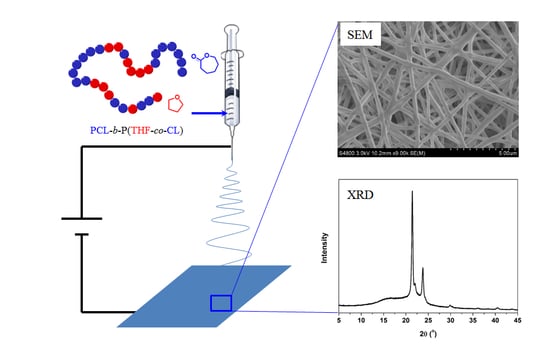Properties of Electrospun Nanofibers of Multi-Block Copolymers of [Poly-ε-caprolactone-b-poly(tetrahydrofuran-co-ε-caprolactone)]m Synthesized by Janus Polymerization
Abstract
:1. Introduction
2. Experimental
2.1. Materials
2.2. Electrospinning
2.3. Annealing
2.4. Mechanical Test
2.5. Characterization
3. Results and Discussion
4. Conclusions
Supplementary Materials
Acknowledgments
Author Contributions
Conflicts of Interest
References
- Guascito, M.R.; Chirizzi, D.; Malitesta, C.; Giotta, L.; Mastrogiacomo, D.; Valli, L.; Stabili, L. Development and characterization of a novel bioactive polymer with antibacterial and lysozyme-like activity. Biopolymers 2014, 101, 461–470. [Google Scholar] [CrossRef] [PubMed]
- Neppalli, R.; Marega, C.; Marigo, A.; Bajgai, M.P.; Kim, H.Y.; Causin, V. Poly(ε-caprolactone) filled with electrospun nylon fibres: A model for a facile composite fabrication. Eur. Polym. J. 2010, 46, 968–976. [Google Scholar] [CrossRef]
- Agarwal, S.; Wendorff, J.H.; Greiner, A. Use of electrospinning technique for biomedical applications. Polymer 2008, 49, 5603–5621. [Google Scholar] [CrossRef]
- Venugopal, J.; Zhang, Y.; Ramakrishna, S. Fabrication of modified and functionalized polycaprolactone nanofiber scaffolds for vascular tissue engineering. Nanotechnology 2005, 16, 2138. [Google Scholar] [CrossRef] [PubMed]
- Li, W.J.; Cooper, J.A.; Mauck, R.L.; Tuan, R.S. Fabrication and characterization of six electrospun poly (α-hydroxy ester)-based fibrous scaffolds for tissue engineering applications. Acta Biomater. 2006, 2, 377–385. [Google Scholar] [CrossRef] [PubMed]
- Pitt, C.G. Poly-ε-caprolactone and its copolymers. In Biodegradable Polymers as Drug Delivery Systems; Chasin, M.P., Langer, R., Eds.; Marcel Dekker: New York, NY, USA, 1990; Volume 45, pp. 71–120. [Google Scholar]
- Van der Schueren, L.; De Schoenmaker, B.; Kalaoglu, Ö.I.; De Clerck, K. An alternative solvent system for the steady state electrospinning of polycaprolactone. Eur. Polym. J. 2011, 47, 1256–1263. [Google Scholar] [CrossRef] [Green Version]
- Lee, K.; Kim, H.; Khil, M.; Ra, Y.; Lee, D. Characterization of nano-structured poly(ε-caprolactone) nonwoven mats via electrospinning. Polymer 2003, 44, 1287–1294. [Google Scholar] [CrossRef]
- Duan, Y.; Jia, J.; Wang, S.; Yan, W.; Jin, L.; Wang, Z. Preparation of antimicrobial poly(ε-caprolactone) electrospun nanofibers containing silver-loaded zirconium phosphate nanoparticles. J. Appl. Polym. Sci. 2007, 106, 1208–1214. [Google Scholar] [CrossRef]
- Moghe, A.; Hufenus, R.; Hudson, S.; Gupta, B. Effect of the addition of a fugitive salt on electrospinnability of poly(ɛ-caprolactone). Polymer 2009, 50, 3311–3318. [Google Scholar] [CrossRef]
- Shimomura, O.; Lee, B.S.; Meth, S.; Suzuki, H.; Mahajan, S.; Nomura, R.; Janda, K.D. Synthesis and application of polytetrahydrofuran-grafted polystyrene (PS-PTHF) resin supports for organic synthesis. Tetrahedron 2005, 61, 12160–12167. [Google Scholar] [CrossRef]
- Aouissi, A.; Al-Deyab, S.S.; Al-Shahri, H. The cationic ring-opening polymerization of tetrahydrofuran with 12-tungstophosphoric acid. Molecules 2010, 15, 1398–1407. [Google Scholar] [CrossRef] [PubMed]
- Stephen Clark, J.; Elustondo, F.; Trevitt, G.P.; Boyall, D.; Robertson, J.; Blake, A.J.; Wilson, C.; Stammen, B. Preparation of cyclic ethers for polyether synthesis by catalytic ring-closing enyne metathesis of alkynyl ethers. Tetrahedron 2002, 58, 1973–1982. [Google Scholar] [CrossRef]
- Jayakannan, M.; Ramakrishnan, S. Recent developments in polyether synthesis. Macromol. Rapid Commun. 2001, 22, 1463–1473. [Google Scholar] [CrossRef]
- Chow, H.F.; Chan, I.Y.K.; Mak, C.C.; Man-Kit, N. Synthesis and properties of a new class of polyether dendritic fragments: Useful building blocks for functional dendrimers. Tetrahedron 1996, 52, 4277–4290. [Google Scholar] [CrossRef]
- Dale, J. The contrasting behaviour of oxirane and oxetane in cationic cyclooligomerization and polymerization. Tetrahedron 1993, 49, 8707–8725. [Google Scholar] [CrossRef]
- Klein, R.; Wurm, F.R. Aliphatic polyethers: Classical polymers for the 21st century. Macromol. Rapid Commun. 2015, 36, 1147–1165. [Google Scholar] [CrossRef] [PubMed]
- Rachmawati, R.; de Gier, H.D.; Woortman, A.J.; Loos, K. Synthesis of telechelic and three-arm polytetrahydrofuran-block-amylose. Macromol. Chem. Phys. 2015, 216, 1091–1102. [Google Scholar] [CrossRef]
- You, L.; Hogen-Esch, T.E.; Zhu, Y.; Ling, J.; Shen, Z. Brønsted acid-free controlled polymerization of tetrahydrofuran catalyzed by recyclable rare earth triflates in the presence of epoxides. Polymer 2012, 53, 4112–4118. [Google Scholar] [CrossRef]
- Gonzalez-Rodriguez, D.; Guevorkian, K.; Douezan, S.; Brochard-Wyart, F. Soft matter models of developing tissues and tumors. Science 2012, 338, 910–917. [Google Scholar] [CrossRef] [PubMed]
- You, L.; Ling, J. Janus polymerization. Macromolecules 2014, 47, 2219–2225. [Google Scholar] [CrossRef]
- Li, Y.; Bai, T.; Li, Y.; Ling, J. Branched polytetrahydrofuran and poly(tetrahydrofuran-co-ε-caprolactone) synthesized by Janus polymerization: A novel self-healing material. Macromol. Chem. Phys. 2016, 218, 1600450. [Google Scholar] [CrossRef]
- Qiu, H.; Yang, Z.; Shah, M.I.; Mao, Z.; Ling, J. [PCL-b-P(THF-co-CL)]m multiblock copolymer synthesized by Janus polymerization. Polymer 2017, 128, 71–77. [Google Scholar] [CrossRef]
- Xie, J.; Li, X.; Xia, Y. Putting electrospun nanofibers to work for biomedical research. Macromol. Rapid Commun. 2008, 29, 1775–1792. [Google Scholar] [CrossRef] [PubMed]
- Wong, S.C.; Baji, A.; Leng, S. Effect of fiber diameter on tensile properties of electrospun poly(ε-caprolactone). Polymer 2008, 49, 4713–4722. [Google Scholar] [CrossRef]
- Darrell, H.R.; Iksoo, C. Nanometre diameter fibres of polymer, produced by electrospinning. Nanotechnology 1996, 7, 216. [Google Scholar]
- Baji, A.; Mai, Y.W.; Wong, S.C.; Abtahi, M.; Chen, P. Electrospinning of polymer nanofibers: Effects on oriented morphology, structures and tensile properties. Compos. Sci. Technol. 2010, 70, 703–718. [Google Scholar] [CrossRef]
- Zhu, G.; Ling, J.; Shen, Z. Isothermal crystallization of random copolymers of ε-caprolactone with 2,2-dimethyltrimethylene carbonate. Polymer 2003, 44, 5827–5832. [Google Scholar] [CrossRef]

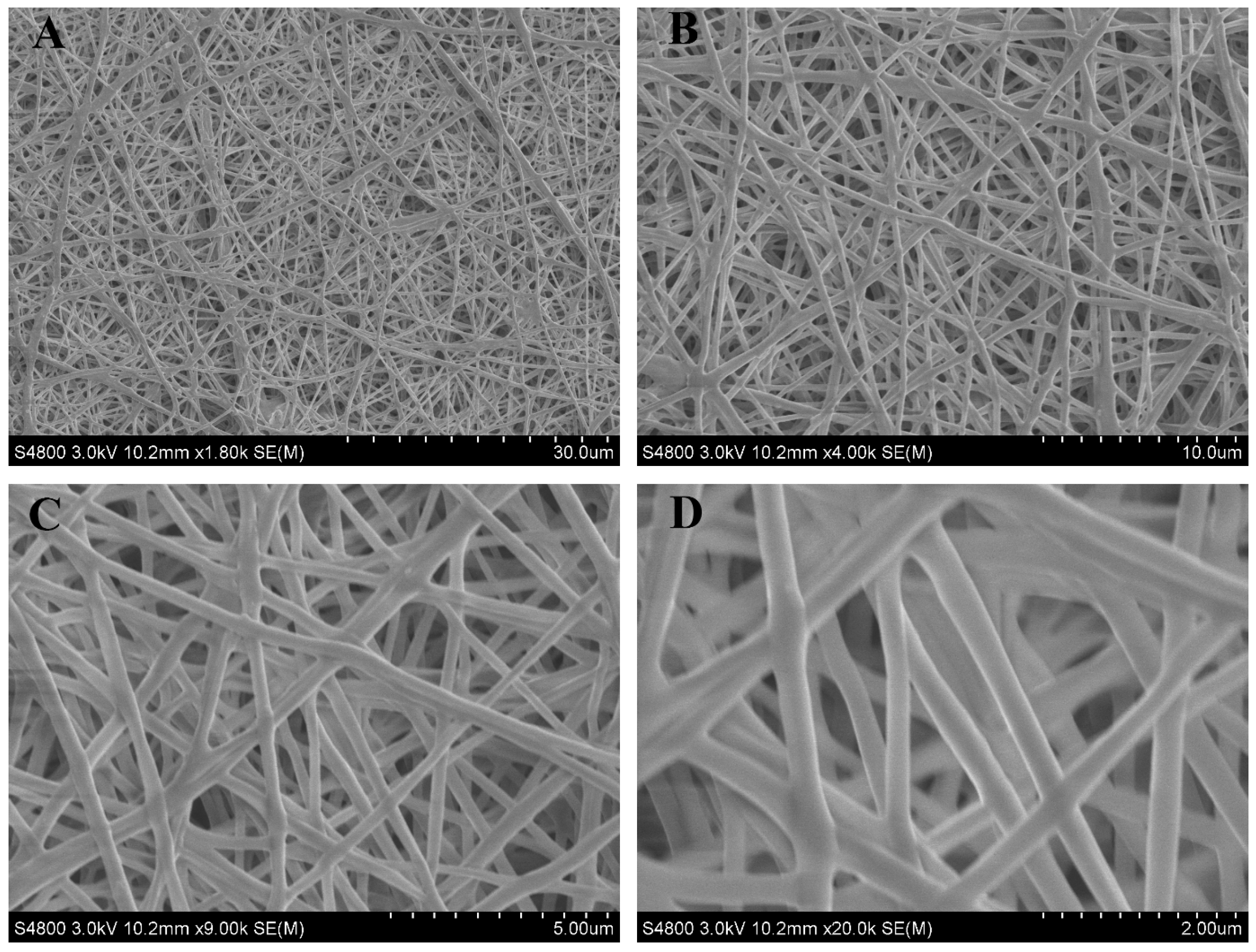

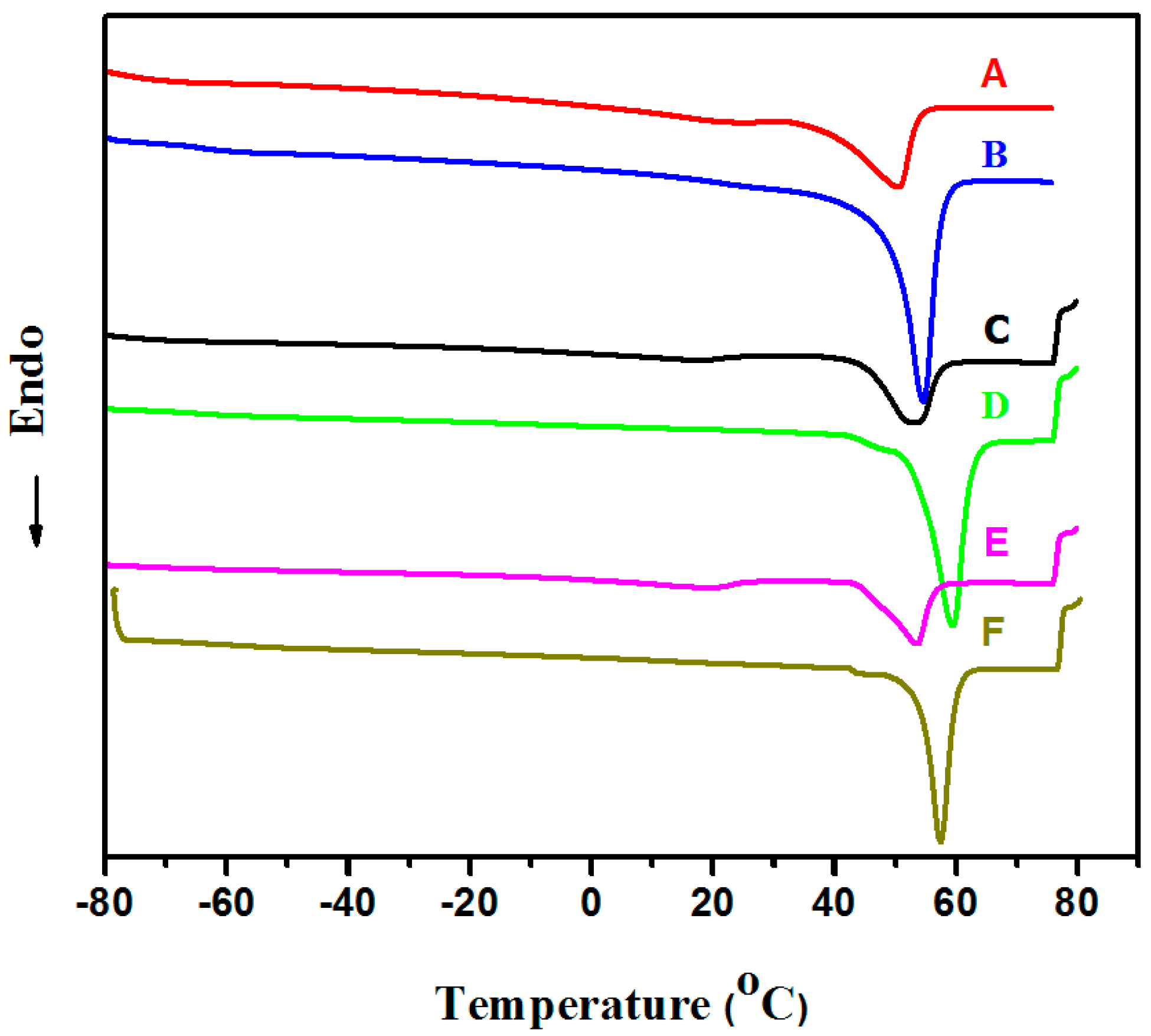

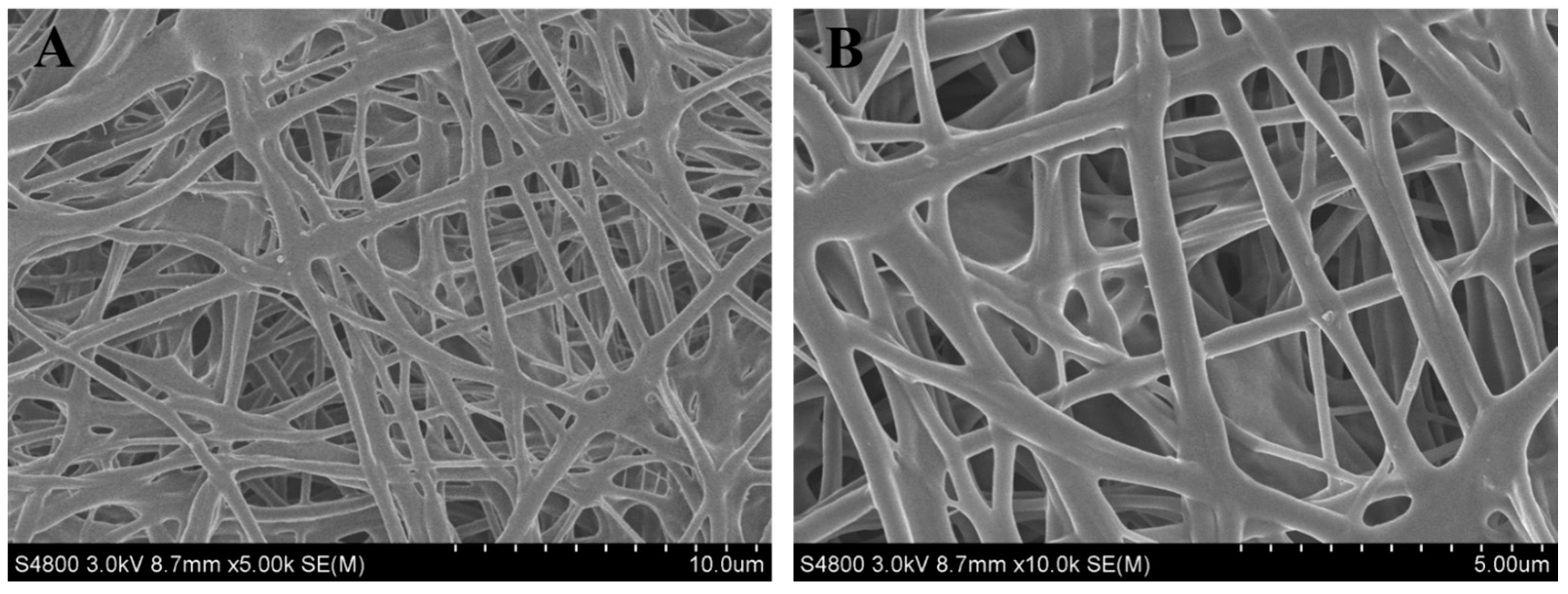
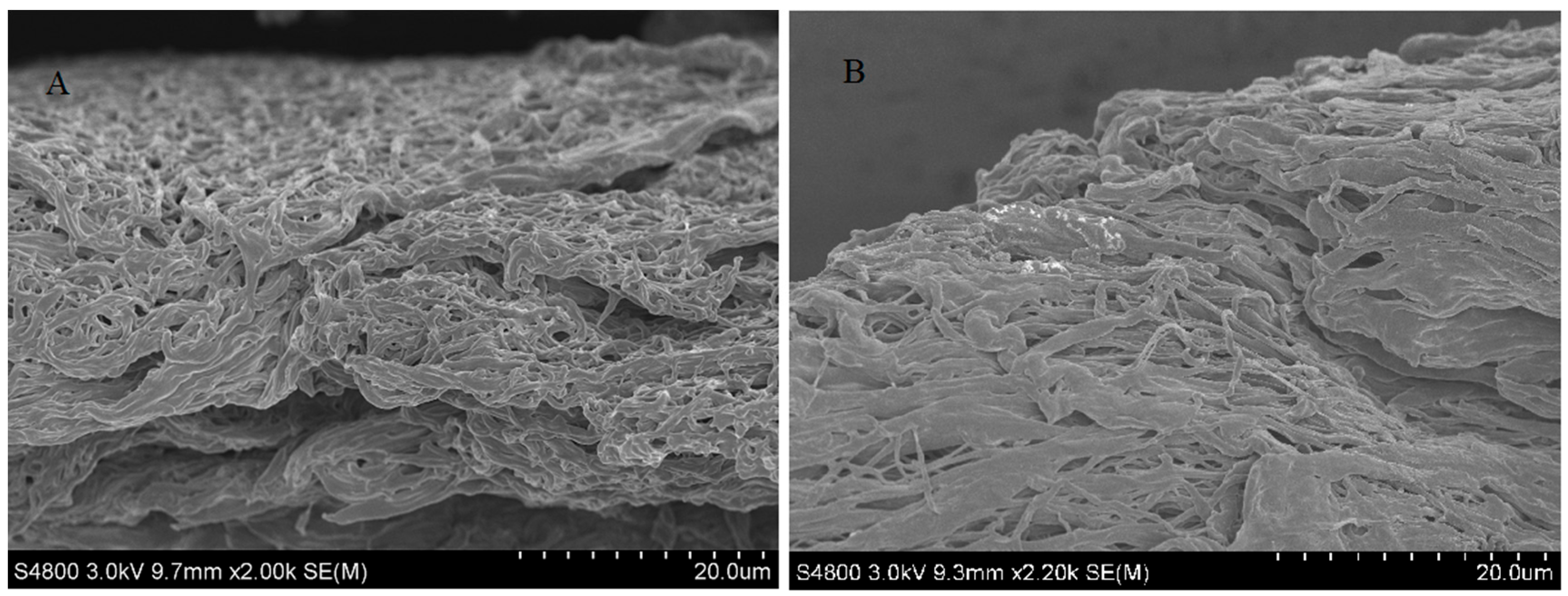
| Sample | CL Content (wt %) a | Mn b (kg/mol) | Đ b | Tm (°C) | ΔH (J/g) | χDSC (%) | χXRD (%) | Tensile Strength (MPa) | Strain at Break (%) |
|---|---|---|---|---|---|---|---|---|---|
| P1-nanofiber | 53.3 | 97 | 2.09 | 51.0 | 32.64 | 43 | 17.4 | 8.1 | 161 |
| P1-annealed | 53.2 | 24.45 | 32 | 21.1 | 10.2 | 267 | |||
| P1-cast film | 53.5 | 26.60 | 35 | 17.4 | - | - | |||
| P1-thermal-molded film | 50.0 | 21.18 | 28 | 5.7 | 20.0 | 2610 | |||
| P2-nanofiber | 88.4 | 131 | 2.06 | 54.0 | 40.57 | 32 | 22.5 | 10.4 | 123 |
| P2-annealed | 60.0 | 50.80 | 41 | 31.2 | 12.5 | 338 | |||
| P2-cast film | 55.5 | 43.06 | 35 | 19.3 | - | - | |||
| P2-thermal-molded film | 55.0 | 37.09 | 30 | 7.1 | 17.1 | 1020 |
© 2017 by the authors. Licensee MDPI, Basel, Switzerland. This article is an open access article distributed under the terms and conditions of the Creative Commons Attribution (CC BY) license (http://creativecommons.org/licenses/by/4.0/).
Share and Cite
Shah, M.I.; Yang, Z.; Li, Y.; Jiang, L.; Ling, J. Properties of Electrospun Nanofibers of Multi-Block Copolymers of [Poly-ε-caprolactone-b-poly(tetrahydrofuran-co-ε-caprolactone)]m Synthesized by Janus Polymerization. Polymers 2017, 9, 559. https://doi.org/10.3390/polym9110559
Shah MI, Yang Z, Li Y, Jiang L, Ling J. Properties of Electrospun Nanofibers of Multi-Block Copolymers of [Poly-ε-caprolactone-b-poly(tetrahydrofuran-co-ε-caprolactone)]m Synthesized by Janus Polymerization. Polymers. 2017; 9(11):559. https://doi.org/10.3390/polym9110559
Chicago/Turabian StyleShah, Muhammad Ijaz, Zhening Yang, Yao Li, Liming Jiang, and Jun Ling. 2017. "Properties of Electrospun Nanofibers of Multi-Block Copolymers of [Poly-ε-caprolactone-b-poly(tetrahydrofuran-co-ε-caprolactone)]m Synthesized by Janus Polymerization" Polymers 9, no. 11: 559. https://doi.org/10.3390/polym9110559




